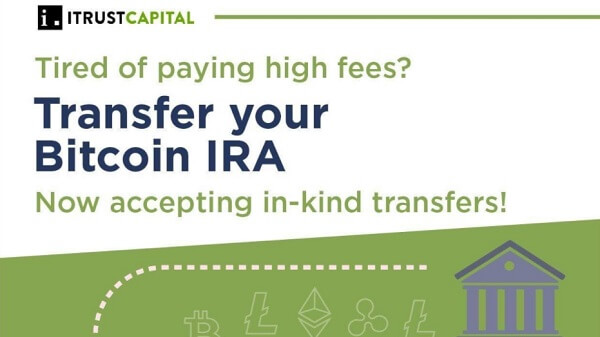
Cardano is close to attaining the title of a fully-fledged smart contracts platform following a critical upgrade in mid-July. The project’s founder Charles Hoskinson confirmed that they recently processed the sales of more than $10 million worth of non-fungible tokens atop their public ledger.
Moreover, SundaeSwap, the first DeFi DEX to utilize Cardano smart contracts is expected to launch soon, and many ADA investors interpret this as a potential bullish catalyst for the altcoin.
But the Ethereum rival’s growth as a project might not lead to higher adoption for its native cryptocurrency, ADA, at least according to an analysis shared by Peter Brandt, the chief executive of global trading firm Factor LLC.
A 60%-90% crash ahead?
The veteran analyst shared a bearish setup for ADA in a tweet published Friday. He cited a classic technical pattern, known as Head and Shoulders, to predict a downside scenario for the Cardano token that is already up more than 600% on a year-to-date timeframe.
In detail, Head and Shoulders forms when the price forms three consecutive peaks atop a single support level, with a condition that the middle peak is higher than other two, which are typically of the same height. The price eventually breaks below the support levels—also called neckline—and falls by as much as the maximum height between the middle peak’s top and the support level.
ADA visibly fits the description, as shown in the chart shared by Brandt.
The analyst envisioned the ADA/USD exchange rate to drop as far as $0.12, down 90% from the pair’s current bid near $1.26. A percentage-based calculation of the Head and Shoulders pattern marked its profit target near $0.35, down 60% from its neckline.
Brandt recalled his record of predicting market tops to add strength to his depressive Cardano prediction. For instance, one of his analyses from 2018, involving Litecoin, corrected spotted a descending triangle setup following the altcoin’s run-up from $4 to $420 during the 2017’s bull run.
“I remember being scoffed at unmercifully when I identified this top in LTC/USD back in mid 2018,” Brandt tweeted. “Hey Cardano trolls, take aim.”
But can 2018 repeat?
The crash that followed the 2017 bull run originated primarily because of the so-called initial coin offering bust. A study conducted by Statis Group noted that more than 80% of blockchain startups that raised funds in Bitcoin, Ether, and other top coins of that time, failed to turn up a working product.
Meanwhile, a majority of them turned out to be outright scams that sold the raised crypto capital, thus creating a downward pressure on the entire market. Litecoin, Bitcoin, and Ether crashed by more than 80% in 2018 as the ICO FUD pushed investments out.
In contrast, the 2020 bull run came in the wake of macroeconomic blunders. The Federal Reserve’s efforts to contain the economic aftermath of the Covid-19 crisis saw it launching an unprecedented quantitative easing program. As a result, near-zero interest rates and $120 billion worth of asset purchases sent investors looking for better alternatives in riskier markets every month.
As a result, Bitcoin boomed from below $4,000 in March 2020 to above $65,000 in April 2021. Meanwhile, altcoins, which tend to tail Bitcoin trends, surged likewise. Cardano’s ADA was one among them; it is now trading more than 7,000% higher from its mid-March bottom.
The 30-day correlation between Bitcoin and ADA stands near 0.85 above zero, per data provided by Crypto Watch.
Related: Waiting for Alonzo: Cardano smart contracts creep toward full launch
Simon Kim, CEO of crypto venture fund Hashed, told Cointelegraph in March that the 2020-2021 crypto market is entirely different from the one from 2017-2018, noting that the market now is running on a completely different fundamental. He said:
“Firstly, various DeFi projects are creating value based on a clear business model. Secondly, we’re seeing record active investment by institutional investors, and finally, various on-ramps and off-ramps, including not only PayPal and Visa but also large banks, are now emerging.”
Rekt Capital, a pseudonymous market analyst, noted that ADA needs to close above its weekly close of $1.30 to confirm its long-term bull trend. Cointelegraph’s Rakesh Upadhyay also pointed out that a break above $1.33 would increase the Cardano token’s potential to extend its upside target towards $1.90.
“Conversely, if the price turns down from the current level or the overhead resistance and slides below $1.20, it will indicate that bears continue to sell at every higher level. That may result in a retest of the critical support at $1,” Upadhyay warned, nonetheless.
The views and opinions expressed here are solely those of the author and do not necessarily reflect the views of Cointelegraph.com. Every investment and trading move involves risk, you should conduct your own research when making a decision.





 Bitcoin
Bitcoin  Ethereum
Ethereum  Tether
Tether  XRP
XRP  Solana
Solana  USDC
USDC  TRON
TRON  Dogecoin
Dogecoin  Lido Staked Ether
Lido Staked Ether
Be the first to comment